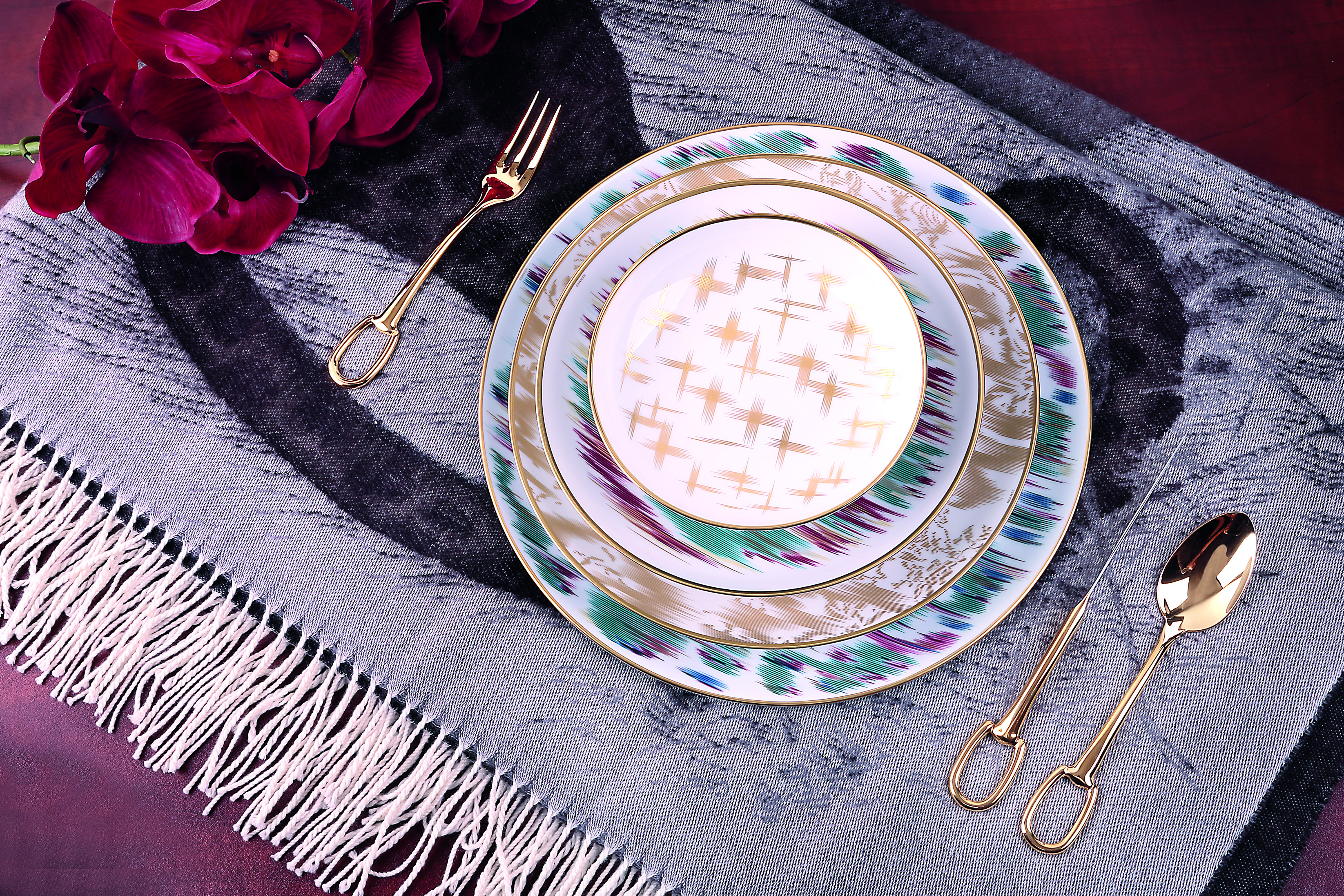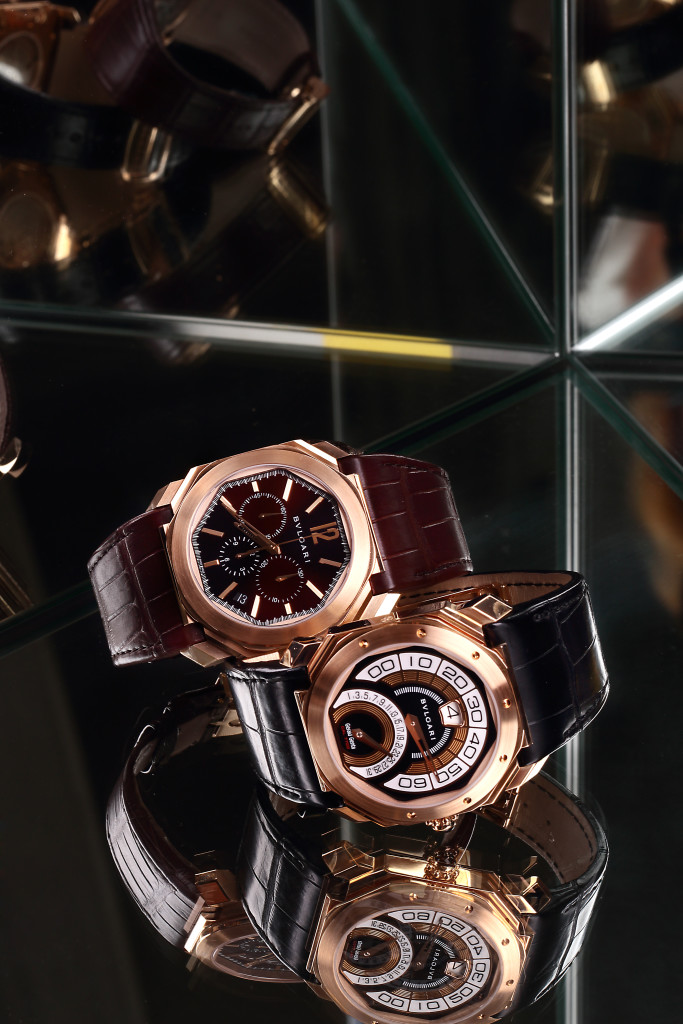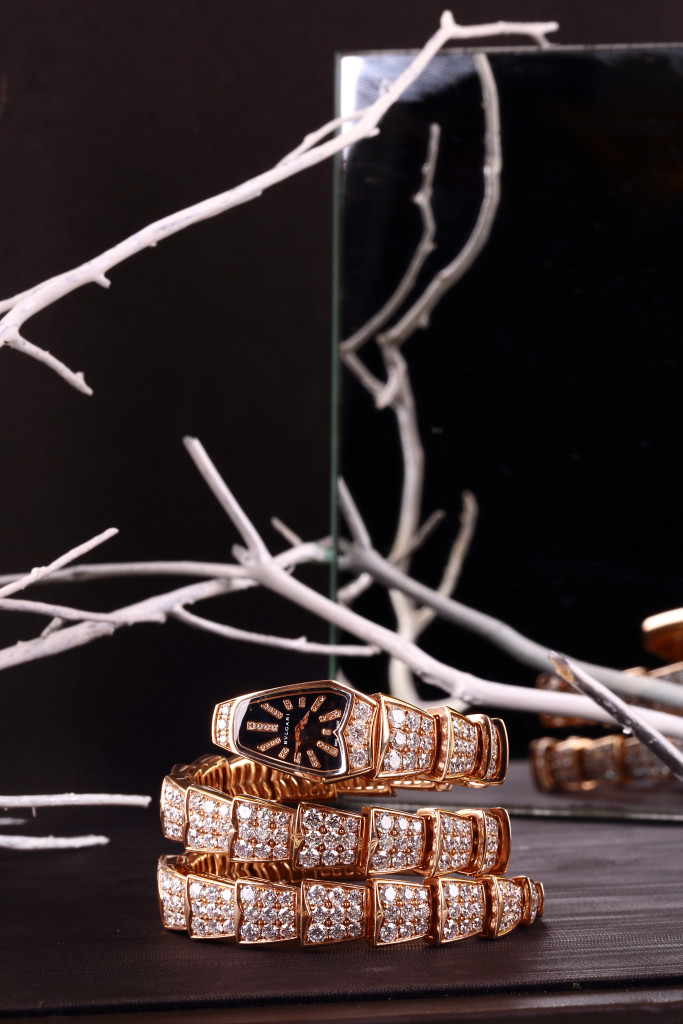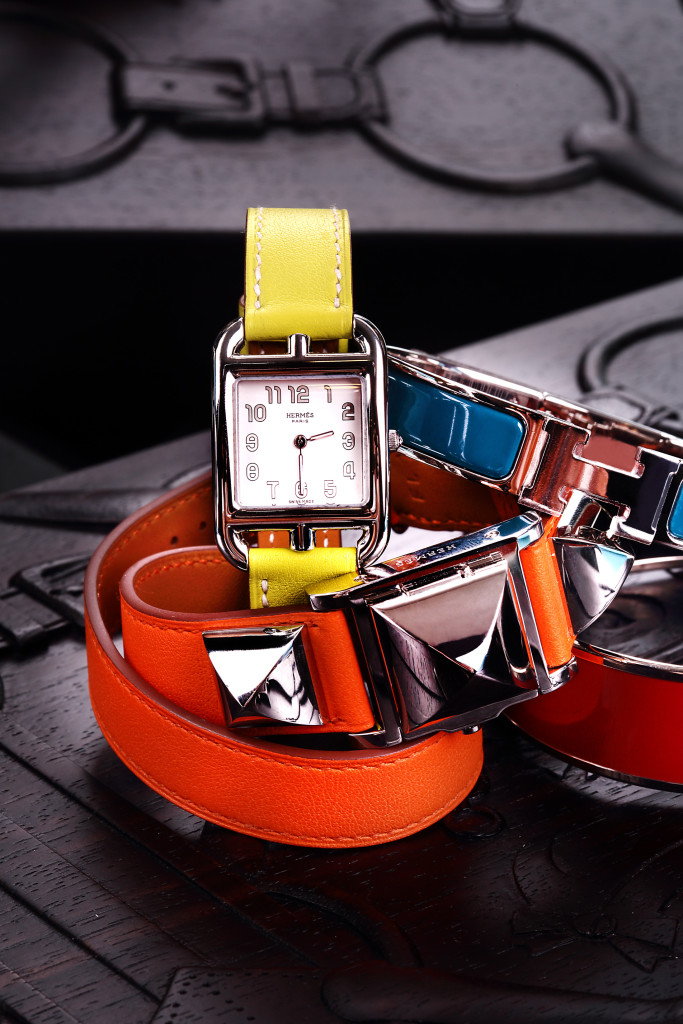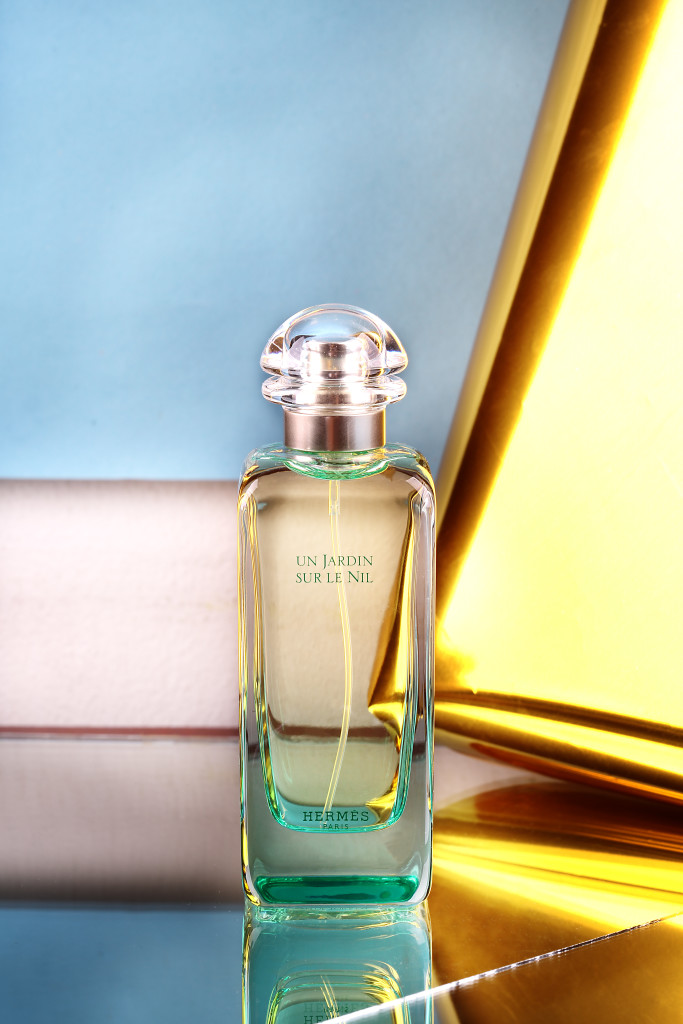Text by JOSE PAOLO DELA CRUZ |
Photography BY MAU AGUASIN |
Creative direction by CHINO CORRALES |
In the words of Victor Hugo, “Nothing is more powerful than an idea whose time has come.†So it rang true when Manila opened its doors in the mid ’90s to one of fashion’s finest names.
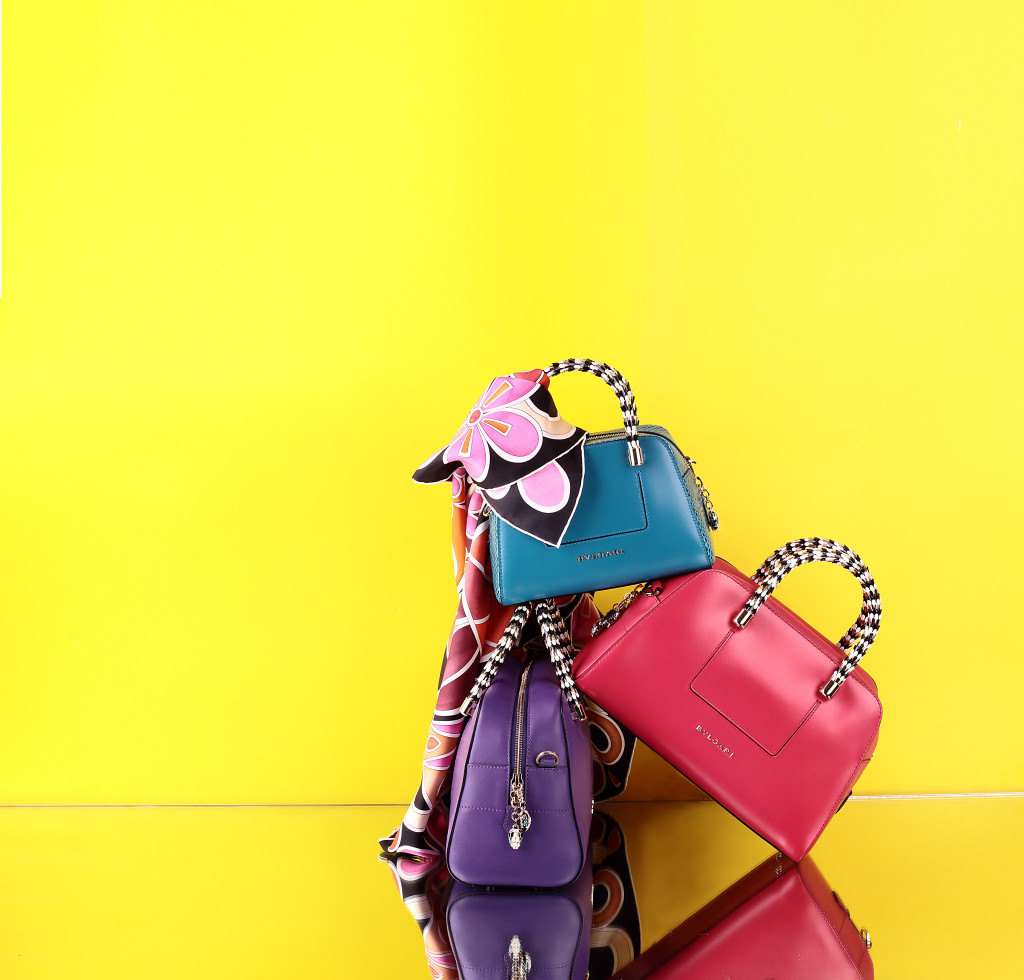
(Bulgari Scaglie bags and ladies’ scarf)
As the Asian financial crisis that threatened to rock the region took shape, at a time when austerity was probably more popular than luxury, a gem of an idea found its way into Mario Katigbak’s head in 1996. He was at the crossroads, having just decided to take a bow from his 25-year-old local shoe business, in the face of increasing competition from Spain and China. Unbeknownst to him, his next venture would make him a stalwart of luxury in the Philippines.
“Bulgari approached me and offered me to run the business here. So that was it, the beginning of Bulgari,†says Mario, the man who now sits as country manager of Horology Jewelry Center Inc., the company running Bulgari’s business in the Philippines.
With that, the famed luxury line opened its first watch corner in the Philippines at the Rustan’s Department Store in Makati City within the same year. So much has happened since.
(Bulgari Octo Chrono in pink gold with brown alligator strap and Bulgari Octo Bi-retro in pink gold with black alligator strap)
(Bulgari Serpenti Scaglie black faced watch in pink gold with diamonds)
No yalty to the brand. It is a market accustomed to being pampered.
Pampering can be a small gesture, like sending a note to remind them to have their jewels cleaned for free. Or, it could be an elaborate surprise, like a cocktail party on their birthday with a handful of guests. Spectacular events that are filled with surprises and the finer things in life — paired with an exclusive guest list — are also a must. As Mario notes, “If you give them ordinary food, ordinary wine, the entertainment is mediocre, they will not come. So you have to make sure that the lifestyle you create and invest on matches your brand.†And there you have it, a loyal market.
Hermès, which has only been in the country for six years, is testament to the formula of pampering clients. It has far exceeded the prominence of certain international luxury brands that have been in the country for a longer period of time, even growing as far as to include fine China, children’s fashion accessories and other items on its glistening shelves. Hermès is also set to almost double its size by opening a second floor for the brand’s home and furniture section next year.
(Medor watch in orange swift, Cape Cod Watch in soufre swift, click H bracelet in Bleu Profond, and Caleche bracelet in Rosso on top of Reliefs de Tatersale scarf box in Java solid palissander wood from Hermès)
The same goes for Bulgari, which has penetrated the jewelry market effectively, again, even better than competitors that have been in town a few decades longer. “Some brands open their door and expect people to come in. We go an extra mile by creating the ambience inside the store so that when they come in, say, Hermès, it’s as if they’re coming in to the [Rue du] Faubourg Saint-Honoré store [in Paris, France]. We have to give them the same experience as they would in the mother company,†says Mario.
Since many Filipinos consider shopping as the perfect punctuation (or sometimes, even as the sole purpose) to a trip to Hong Kong and Singapore, Hermès and Bulgari stores in these neighboring countries can also be competitors of the stores in Manila. But by making sure that stocks are always available, and that prices are monitored and stabilized based on exchange rates, that problem is dealt with. “Small ticket items (priced at around $1,000 or $2,000) they’ll buy it there. But when it comes to $20,000 or $30,000, it’s easier to buy them here. And it’s already here; if the price is equivalent, not a problem. Plus of course, you have the service that goes with the purchase,†adds Mario.
(Un Jardin Sur Le Nil from Hermès)
In the end, luxury isn’t only just about the karats or cuts, or the zeroes on a price tag that accentuates these objects of refinement. It’s about the propagation of a lifestyle, the kind that only masters of luxury such as Mario can cultivate. “Luxury retail is not just about selling luxury products, but ensuring luxury service as well. You have to find different ways of pampering your client and get their loyalty — because they know that they’re being cared for,†concludes Mario.

